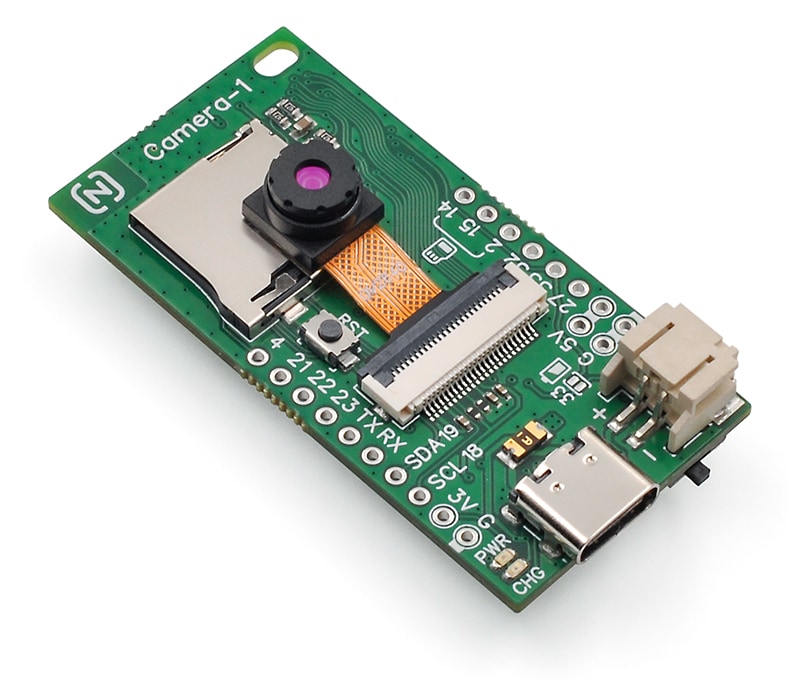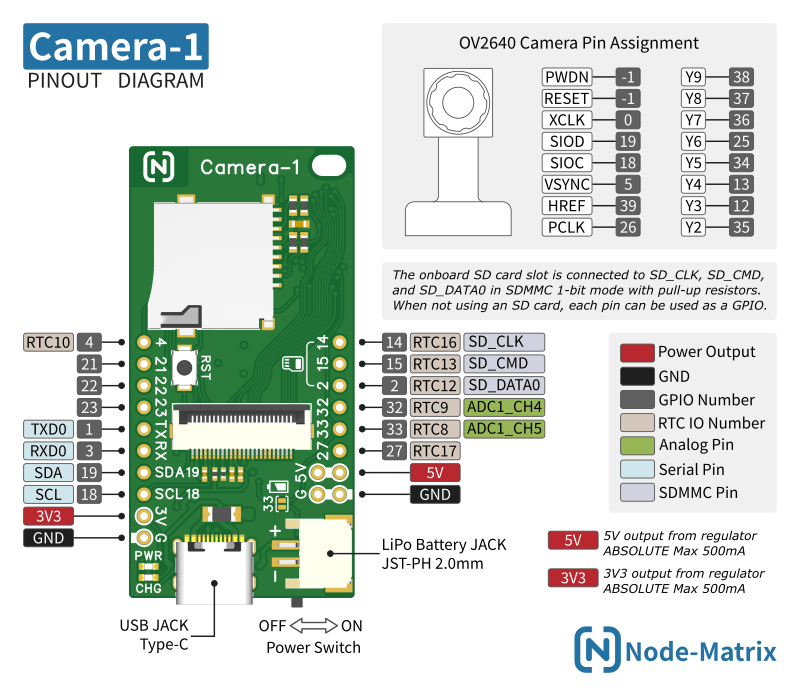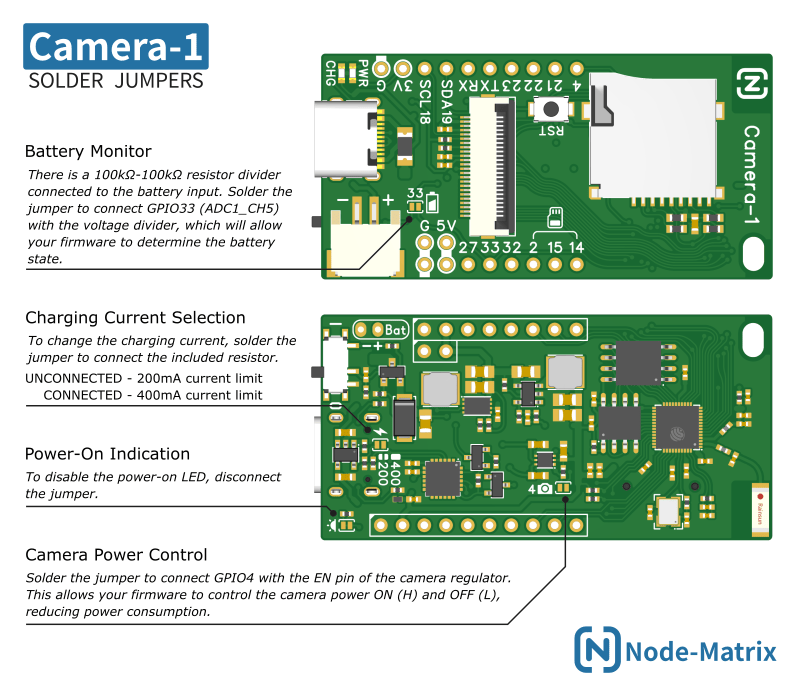There are numerous camera modules built around the ESP32 chip, including the ESP-EYE, ESP32-CAM, and M5 Camera Module. However, when integrating these modules into real-world projects, the limited number of available GPIO pins often becomes a challenge. To overcome this, developers typically resort to adding external Arduino boards or other controllers to expand I/O capabilities. This requires programming multiple devices and managing their communication, significantly increasing project complexity. That’s why we designed Camera-1 — a new ESP32 camera module.

Camera-1 is designed to maximize port availability, offering 10 GPIOs (3 of which are shared with the SD card slot), along with UART and I2C interfaces. These GPIOs can be used to control actuators such as servos, motors, electromagnetic switches, and more. You can also connect a PCA9685 via the I2C interface to further expand PWM outputs. The onboard DC-DC converter provides 500mA at both 5V and 3.3V, allowing it to drive additional external modules. Camera-1 includes built-in features such as a USB-to-serial port, an SD card slot, and battery charging management. Jumpers can be shorted to enable battery level detection and camera power control.


Camera-1 is ideally suited for applications that combine camera functionality with the need to control multiple peripheral modules. Examples include video rovers with multiple drive wheels, robotic arms with vision capabilities, or video gimbals integrated with sensors. Camera-1 can be programmed using popular development platforms such as Arduino, PlatformIO, and ESP-IDF.
Schematic
https://github.com/nodematrix/Node-Matrix_Camera-1
Firmware
https://github.com/nodematrix/ESP32CameraDemo
Learn
Programming ESP32 Camera Using Arduino IDE 2.0
Shop
Camera-1